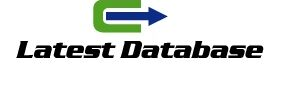As already mentioned, Core Web Vitals are an important ranking factor and should therefore be considered in every SEO strategy. Now that we’ve clarified how the individual field data is measured, we’ll take a closer look at how they can be specifically improved.
However, it should be noted in advance that optimizing Core Web Vitals often requires extensive technical knowledge of HTML, CSS, or even JavaScript. To avoid irreversible errors, it is therefore essential to create a complete backup of the existing site beforehand. For further detailed evaluations with appropriate suggested solutions, however, a dedicated tool such as PageSpeed Insights should be used.
- LCP:
The simplest and probably most effective way to achieve better LCP values is through faster server response times. A fast and powerful web host can significantly improve performance. Large and slow-loading resources such as GIFs or high-resolution images should also be compressed. New and modern formats such as the WebP image format are ideal for lossless image compression. - CLS:
Images or videos without a specified height or width can lead to poor CLS values. Therefore, these media should always be provided with size rcs data information in the HTML code. When using animations, care should also be taken to ensure that these do not change the size of the elements. - INP:
High First Input Delay values can be caused by large JavaScript code. Since JavaScript code is loaded every time a website is accessed, it’s especially advisable to optimize it. This can be done manually by removing unnecessary code sections or automatically using JavaScript compression tools.
Increase conversion rate through Core Web Vitals
Long loading times and frequent layout changes are extremely annoying for all users and negatively impact conversion rates and dwell time. Optimizing optimization and maximization these metrics can therefore positively influence the page experience. The better the user experience, the more likely the customer is to complete the desired interaction. Here are some examples of how optimizing Core Web Vitals can positively impact conversion rates.
Loading times
Loading time is arguably the biggest influence on page experience. Slow websites are major conversion killers. Furthermore, 65% of customers abandon an online purchase if the loading time takes more than three seconds. Therefore, loading time is not only crucial for ranking in organic search results, but also for user conversions.
- Layout shifts:
Unexpected and frequent layout shifts lead to unintentional clicks. Unintentional clicks can frustrate or even harm the user. Therefore, layout shifts can also lead to higher bounce rates . - Interaction:
Slow interaction, such as interaction with forms, links, or buttons, negatively impacts conversion. A slow response time after an interaction increases the likelihood that the user will want to perform further actions.
Conclusion: Core Web Vitals are a ranking factor and can increase the conversion rate
Core Web Vitals are not only an important australia database directory ranking factor, but also have a significant impact on the user experience. The longer a page takes to load, the less likely a user is to convert. Therefore, if you want to improve the user experience in addition to a good search ranking, you should always keep field data like CLS, LCP, or INP at a good metric.

